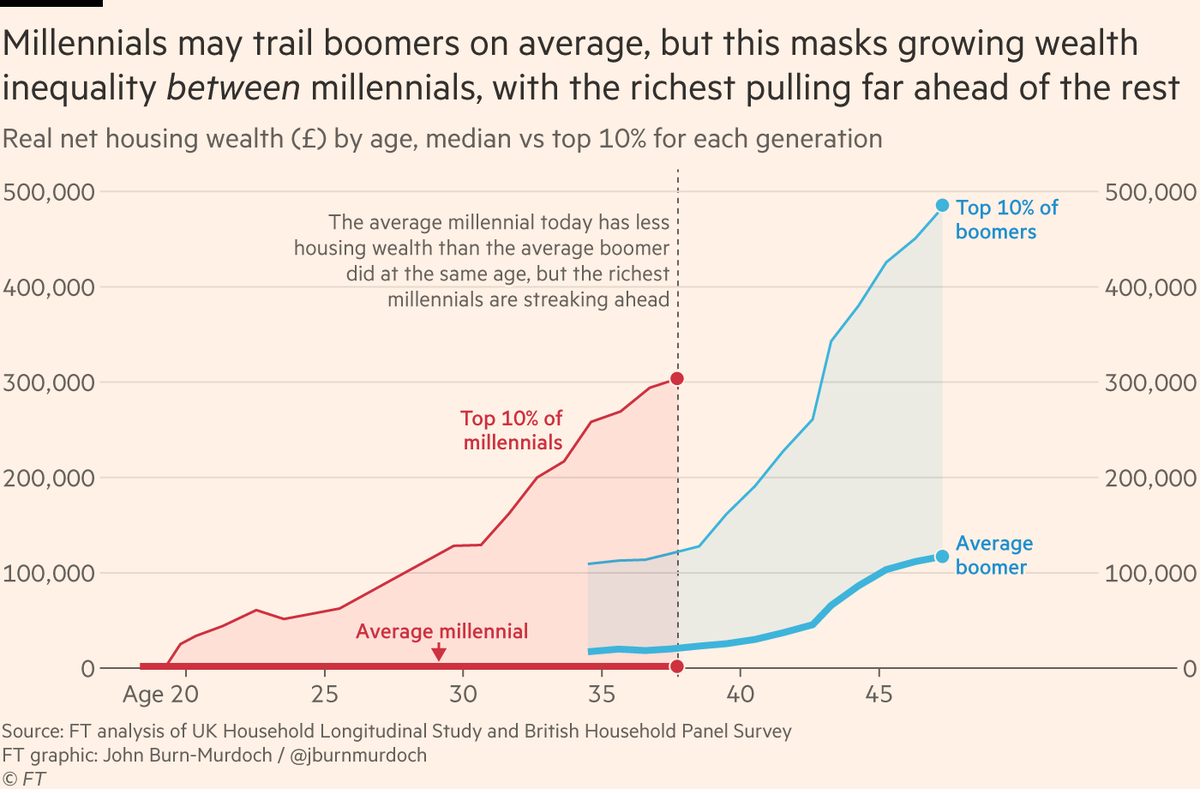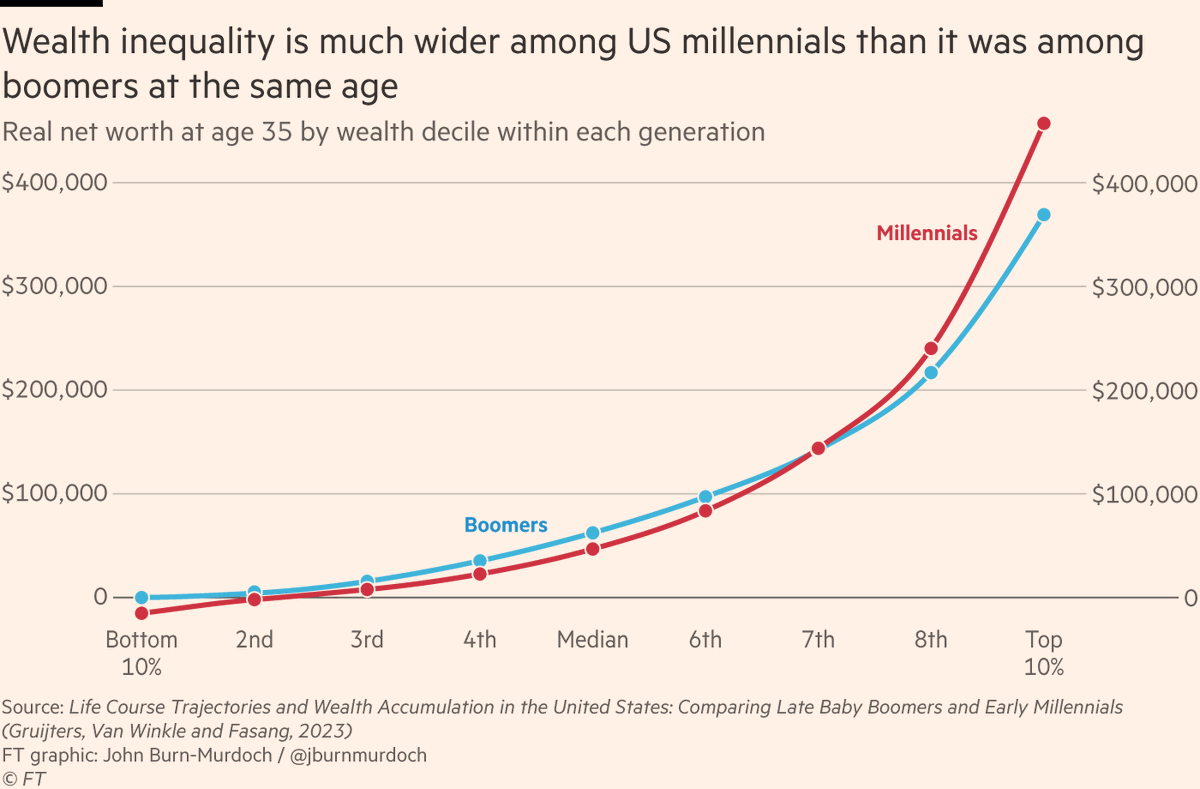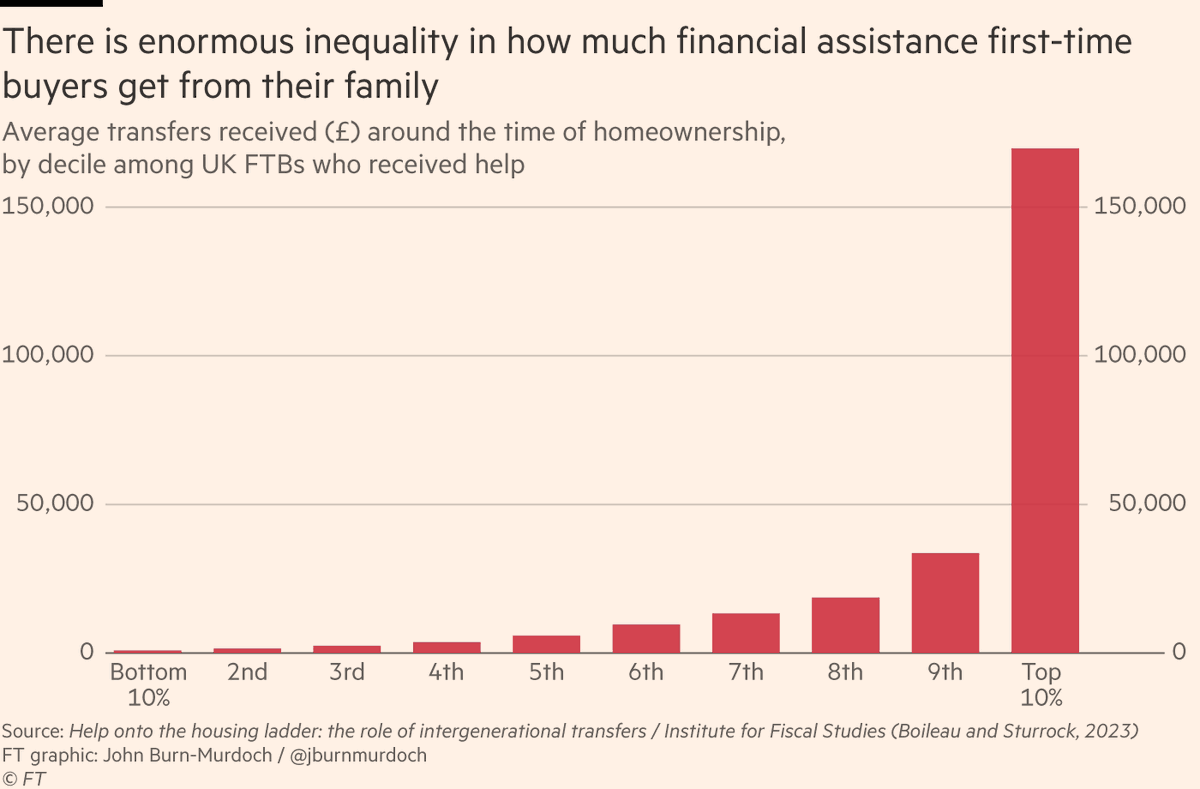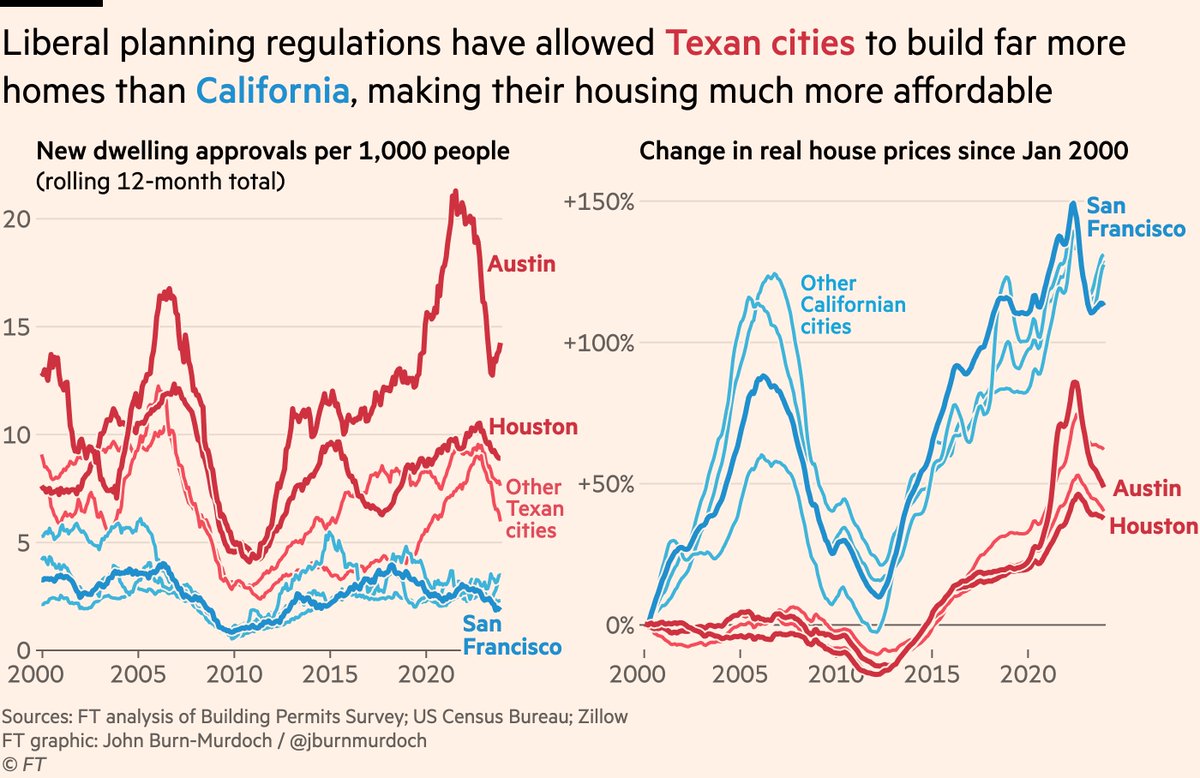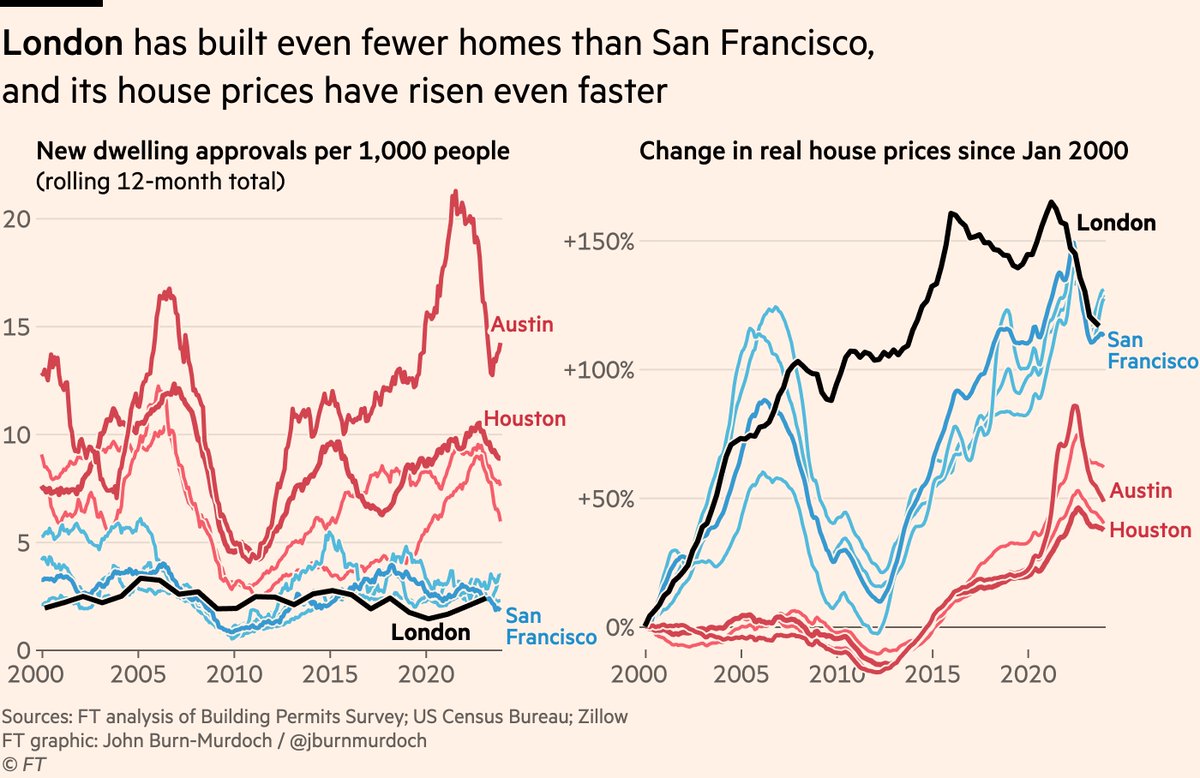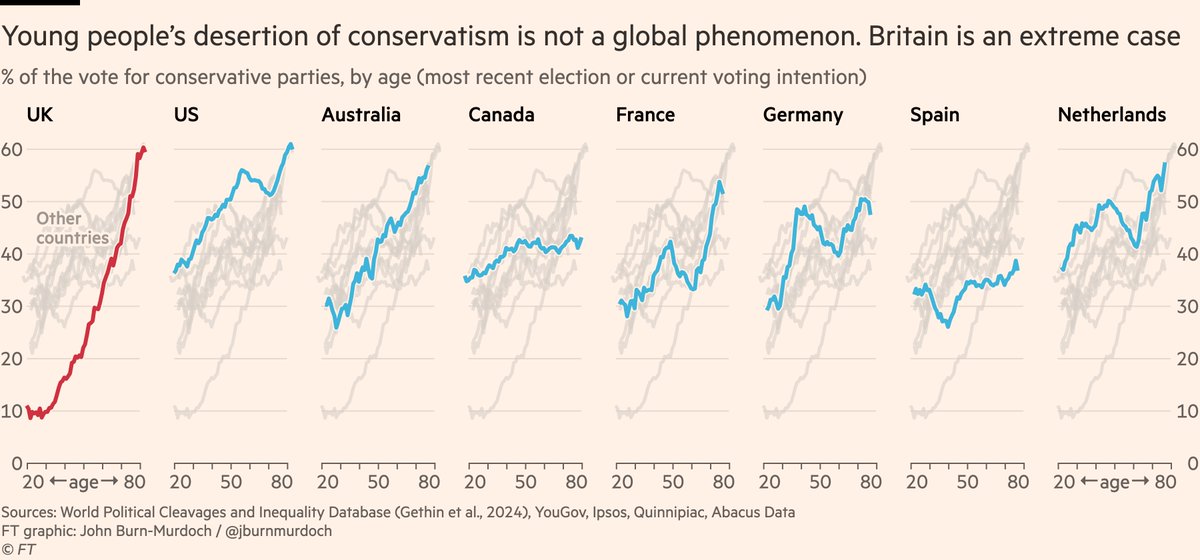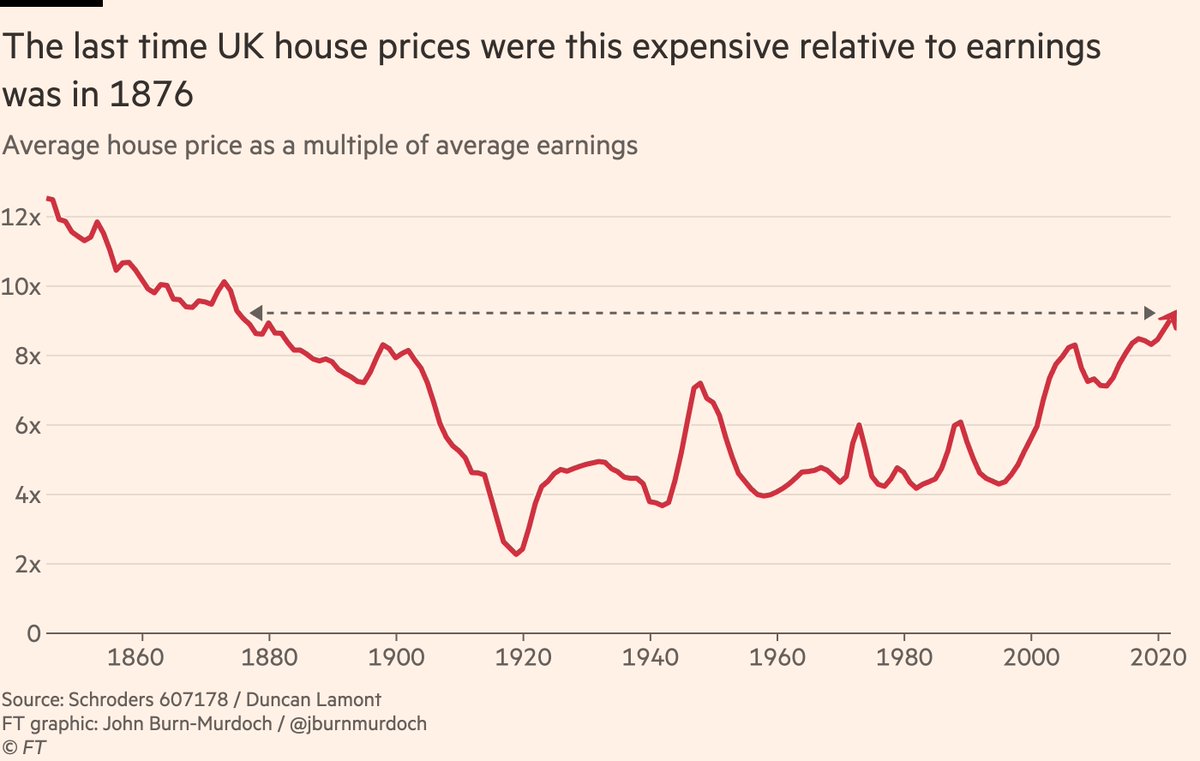NEW 🧵:
American politics is in the midst of a racial realignment.
I think this is simultaneously one of the most important social trends in the US today, and one of the most poorly understood.
American politics is in the midst of a racial realignment.
I think this is simultaneously one of the most important social trends in the US today, and one of the most poorly understood.

Last week, an NYT poll showed Biden leading Trump by less than 10 points among non-white Americans, a group he won by almost 50 points in 2020.
Averaging all recent polls (thnx @admcrlsn), the Democrats are losing more ground with non-white voters than any other demographic.
Averaging all recent polls (thnx @admcrlsn), the Democrats are losing more ground with non-white voters than any other demographic.

People often respond to these figures with accusations of polling error, but this isn’t just one rogue result.
High quality, long-running surveys like this from Gallup have been showing a steepening decline in Black and Latino voters identifying as Democrats for several years.
High quality, long-running surveys like this from Gallup have been showing a steepening decline in Black and Latino voters identifying as Democrats for several years.

And America’s gold-standard national election surveys show a similarly sharp decline, with non-white proximity to Democrats now at its lowest since the 1960s, before the civil rights movement and the 1964 election which aligned Black voters with the Dems and against the GOP 

So the non-white shift away from Dems seems very real. But what’s driving it?
One factor is fading memories. The civil rights movement and 1964 realignment formed very strong political bonds for the people who lived through it, but this is less true for more recent generations.
One factor is fading memories. The civil rights movement and 1964 realignment formed very strong political bonds for the people who lived through it, but this is less true for more recent generations.
The bond between young Black Americans and Democrats is far weaker than among older cohorts.
I don’t think everyone appreciates that the familiar "young favour Dems, old favour Republicans" gradient we see in the US population overall is *inverted* among the Black population.
I don’t think everyone appreciates that the familiar "young favour Dems, old favour Republicans" gradient we see in the US population overall is *inverted* among the Black population.

The oldest Black Americans, whose political allegiances were formed in the 1960s and ’70s, identify as Dems over Reps by a margin of 82%.
Among the youngest Black voters, who have grown up in a very different socio-political environment, the Democrat advantage is just 33%
Among the youngest Black voters, who have grown up in a very different socio-political environment, the Democrat advantage is just 33%

The changing image of the parties regarding class and income is also a factor.
In 2020 the richest third of voters favoured the Dems for the first time, and the Republicans improved with the poorest. The GOP now appeals to working- and middle-class voters of all ethnicities
In 2020 the richest third of voters favoured the Dems for the first time, and the Republicans improved with the poorest. The GOP now appeals to working- and middle-class voters of all ethnicities
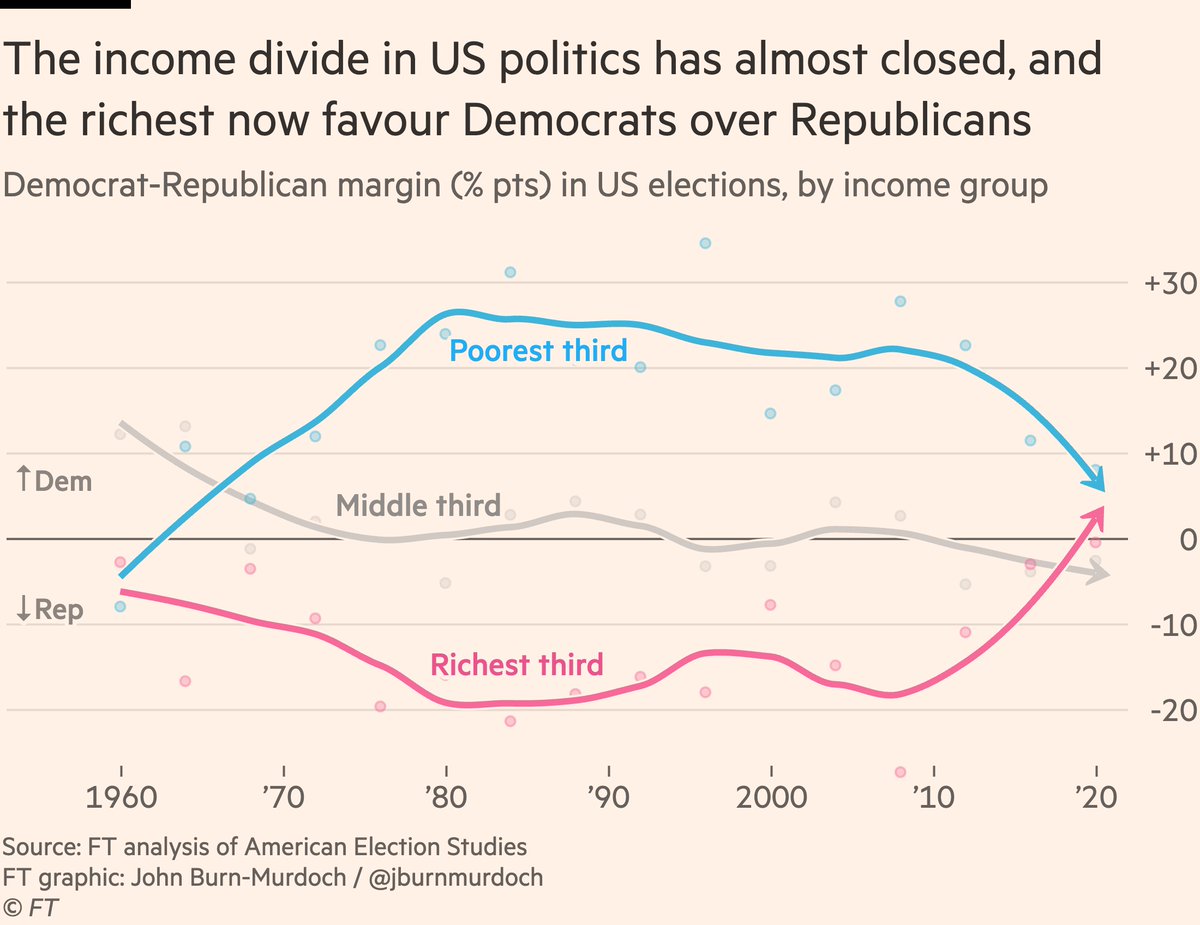
But fading memories and increased competition for working class votes are fixable problems.
As long as these voters’ values remain fundamentally aligned with those of the Democratic party, the right person, policy, or rhetoric can win them back.
However…
As long as these voters’ values remain fundamentally aligned with those of the Democratic party, the right person, policy, or rhetoric can win them back.
However…
Much more ominous for the Democrats is a less widely understood dynamic:
Large numbers of non-white Americans have long held much more conservative views than their voting patterns would suggest.
Their values are very much *not* aligned with the party.
Large numbers of non-white Americans have long held much more conservative views than their voting patterns would suggest.
Their values are very much *not* aligned with the party.
To show you what I mean by that, I will refer to the brilliant work of @IsmailWhitePhD and @ChrylLaird, whose 2020 book Steadfast Democrats explores why Black Americans historically voted Democrat in such large numbers *despite* often holding very conservative views. 

Take deeply conservative positions like support for gun rights, opposition to abortion or the belief that government should stay out of people’s lives.
Very few white voters with these views identify as Dems, but much larger shares of Black, Latino and Asian conservatives do.
Very few white voters with these views identify as Dems, but much larger shares of Black, Latino and Asian conservatives do.

This anomaly has historically given Dems a huge boost, but it has begun to unwind.
In 2012, the vast majority of Black conservatives still identified as Democrats, but that has since fallen to less than half. Latino and Asian conservatives show similar but less sudden trends
In 2012, the vast majority of Black conservatives still identified as Democrats, but that has since fallen to less than half. Latino and Asian conservatives show similar but less sudden trends

Once you realise this, the Dem -> Rep migration among non-white voters that we’ve seen in recent years becomes not so much a case of natural Democrats drifting away because they’ve become disillusioned, but natural Republicans realising they’ve been voting for the wrong party.
We can also use this chart, which I adapted from White & Laird and @PatrickRuffini’s excellent book Party of the People.
It shows people’s self-reported political views from left to right, and their Rep-Dem margin top to bottom
Liberals vote Dem, conservatives vote Rep. Simple.
It shows people’s self-reported political views from left to right, and their Rep-Dem margin top to bottom
Liberals vote Dem, conservatives vote Rep. Simple.

Except here’s how it actually looked in 2012: white voters were very well sorted, matching ideology to voting patterns
But Asian, Latino and especially Black voters were misaligned, with large numbers of non-white ideological conservatives voting Democrat in that year’s election
But Asian, Latino and especially Black voters were misaligned, with large numbers of non-white ideological conservatives voting Democrat in that year’s election

But just look at the realignment since then:
Latino conservatives are now a very solidly Republican group, and Black conservatives favoured Republicans over Democrats for the first time in 2022.
All groups are increasingly matching vote choice to ideology.
Latino conservatives are now a very solidly Republican group, and Black conservatives favoured Republicans over Democrats for the first time in 2022.
All groups are increasingly matching vote choice to ideology.

So you can see the problem for the Dems.
The non-white voters they’re losing are conservatives.
They won’t be won back by a bold green policy or defunding the police. Their historical support for Democrats was an anomaly and a further rightward shift is as likely as a reversal.
The non-white voters they’re losing are conservatives.
They won’t be won back by a bold green policy or defunding the police. Their historical support for Democrats was an anomaly and a further rightward shift is as likely as a reversal.
So this explains the big shifts we’re seeing, but why is the racial realignment happening *now*?
@IsmailWhitePhD & @ChrylLaird find that social pressure is key.
When everyone around you votes a certain way, you feel pressure to do the same. Political norms are hard to overcome
@IsmailWhitePhD & @ChrylLaird find that social pressure is key.
When everyone around you votes a certain way, you feel pressure to do the same. Political norms are hard to overcome
In a brilliant piece of research they found that when Black voters with very conservative views have almost exclusively Black social groups, they still vote Dem.
But if they have a more mixed social group, the weaker norm for voting Dem lets them vote in line with their beliefs.
But if they have a more mixed social group, the weaker norm for voting Dem lets them vote in line with their beliefs.

I’ve extended their analysis and I find the same thing, with a similar effect among Latinos.
When people have more diverse social groups, there’s less social pressure to vote for the dominant party in the community, so non-white conservatives feel they can vote Republican.
When people have more diverse social groups, there’s less social pressure to vote for the dominant party in the community, so non-white conservatives feel they can vote Republican.

There are echoes of Britain’s Red Wall — the English communities identified by @JamesKanag which had conservative demographics and attitudes but had stopped short of voting Tory due to a long-held sense that the party was not for them. In 2019 that changed
https://twitter.com/JamesKanag/status/1161639307536457730
Non-white Americans are in a similar position.
Strong community norms have kept them in the blue column for decades, but those forces are weakening.
The surprise is not so much that these voters are shifting their support to align with their beliefs, but that it took so long.
Strong community norms have kept them in the blue column for decades, but those forces are weakening.
The surprise is not so much that these voters are shifting their support to align with their beliefs, but that it took so long.
So you have:
• Decline of church attendance (key source of political norm policing)
• The US becoming more racially mixed, less segregated, fewer people with no friends/family of other races
The friction preventing non-white conservatives from voting Republican is diminishing.
• Decline of church attendance (key source of political norm policing)
• The US becoming more racially mixed, less segregated, fewer people with no friends/family of other races
The friction preventing non-white conservatives from voting Republican is diminishing.
And crucially, that weakening of political norms doesn’t only come from people of other races.
As the number of Black Republicans has risen from ~5% to 15% (the figure among young Black adults today), the Democrat-voting norm is eroded and the stigma of voting Republican reduced
As the number of Black Republicans has risen from ~5% to 15% (the figure among young Black adults today), the Democrat-voting norm is eroded and the stigma of voting Republican reduced
This can happen very quickly in a “preference cascade”, where people who previously masked their true feelings to fit in, start discovering that other people actually share their beliefs, so suddenly lots of people shift their behaviour at once (screenshot from @PatrickRuffini) 

And ‘a rapid shift in [voting] behaviour as people who were previously masking their [political] beliefs discover that others hold the same views as they do’ fits well with these charts.
Viewed in this light, the size of the shifts in current polling is entirely plausible.


Viewed in this light, the size of the shifts in current polling is entirely plausible.


To be clear, nothing in politics is guaranteed to last.
Some shifts are temporary, and many of those deserting the Democrats will become swing voters rather than solid Republicans.
These people can be won back and should absolutely not be written off.
Some shifts are temporary, and many of those deserting the Democrats will become swing voters rather than solid Republicans.
These people can be won back and should absolutely not be written off.
But if you take one thing away from this thread:
The left’s challenge with non-white voters is much deeper than it first appears.
A less racially divided America is an America where people vote more based on their beliefs than their identity. This is a big challenge for Dems.
The left’s challenge with non-white voters is much deeper than it first appears.
A less racially divided America is an America where people vote more based on their beliefs than their identity. This is a big challenge for Dems.
And here’s my column in full:
ft.com/content/a76076…
ft.com/content/a76076…
@SM_Kali1 And that in turn is related to young women now being much more likely to go to college than young men, with college having a liberalising effect on values.
In addition college grads are more likely to attend church, where political norms are strong.
In addition college grads are more likely to attend church, where political norms are strong.
@mopenshaw @mllichti Absent any major changes between now and election day (e.g Kamala as candidate), I think the current non-white polling average (64-36 Dem) will end up being about right (was 74-26 in 2020).
@H1Whe @mllichti @Beerbecue7 @mopenshaw But I presume your focus was more on the chart at the top of the thread. Here are two alt versions of that one, alongside the original:






• • •
Missing some Tweet in this thread? You can try to
force a refresh


